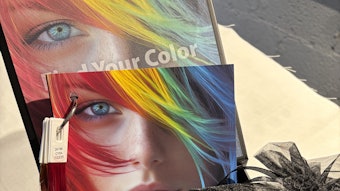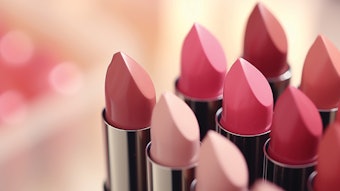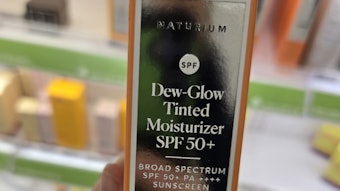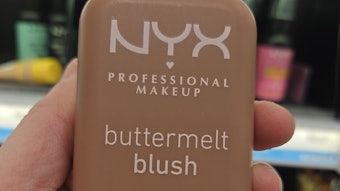
To read this article in its entirety, click through to your April 2020 digital magazine. . .
Consumer expectations facing mascara performance and the increasing complexity of formulations has led to continuous requests for developing innovative recipes, new brushes and wipers. All the desired factors cannot always coexist in one formula; it is difficult to simultaneously combine aesthetic targets such as length, curl, volume and high lash definition. In fact, when trying to increase the eyelash volume by applying mascara, the increased weight of the eyelashes results in a reduction in their curl.1
In addition, other important mascara requirements must be considered and tested, i.e.: safety for the eyes and surrounding skin; easy and even application without stickiness among the eyelashes or clumps; fast-drying, long-lasting wear; and resistance to flaking, smudging, water and transfer—but at the same time, easy and fast removal at the end of the day. The drying time must be slow enough for an even application but not excessively long, to make the applied film reasonably permanent.2
A close connection between a well-performing formula and the proper applicator can create a successful mascara. Today, packaging is a real source of innovation. It is not only an attractive, even luxurious, casing for the formula, but it is also responsible for the product’s application function. New brush materials and shapes, combinations of fibers created by 3D printing, and advanced battery-operated technologies are launched continuously on the market.3
Packaging aside, however, what innovations have occurred in recent mascara formulation? In general, the base structure of formulas has not changed much in years, although new raw materials have been made available to cosmetic formulators. This article reviews the components of mascara formulations and considers the properties they impart. In addition, base formulas were developed and tested using varying ingredients to determine different product outcomes. The authors conclude that a combined strategy to select and assemble ingredients is crucial to developing a successful mascara.
Mascara Formulating
An overall analysis of global product compositions shows a prevalence for oil-in-water (o/w) anionic emulsions or anhydrous lipid gels. These are preferred when water resistance is required. They are composed of pigments suspended in hydrocarbon solvents, gelled by organo-modified clays and waxes, and upon evaporation of the solvent, the waxes act as plastic film formers.
O/W emulsions are generally based on anionic emulsifiers; the oil-wax phase, generally ranging from 25% to 35% may contain stearic/palmitic/isostearic/oleic acids, which react with an alkali dissolved in the aqueous phase and form the corresponding soaps. Thanks to the successive reaction of soaps with the carbon dioxide of air, a fatty acid layer forms on the eyelashes in combination with waxes and film-forming polymers, creating an insoluble and flexible film.
Additional emulsifiers with high HLB values are sometimes used, such as potassium cetyl phosphate, polyglyceryl-3 methylglucose distearate or steareth-20/21. The pigments in the formula, at a typical concentration of around 10-12%, are carbon black or iron oxides (mainly black), in uncoated form or coated with alumina and stearic acid, silicones, polymers, cellulose, lecithin or amino acids.4 Further functional components are humectants, suspending and chelating agents, preservatives and specific “active” ingredients for lash-strengthening and other marketable benefits marketed to consumers.
Materials and Methods
To explore the influence of key ingredients and an assembly strategy to optimize mascara properties, a wide systematic study of o/w mascara emulsions was carried out. The core ingredient categories assessed included waxes, film-forming polymers and fillers.
Waxes give body and structure to the formula. In mascaras, waxes function to create a thick film on the eyelashes to obtain a volume-enhancing effect. Waxes also exert other properties such as lash lengthening, volume enhancing and curling.
Film-forming polymers create a uniform film on the surface once a cosmetic product has been applied, giving long-lasting wear, non-transfer effects and water resistance. Polymeric chains arrange in a uniform layer, when conveyed through a medium that is capable of evaporating, creating flexible and versatile films on the eyelashes. Polyurethanes and polyacrylates are the most used polymers in the cosmetic field.5
Fillers are inorganic or organic solids that are insoluble in the vehicle and have different shapes—i.e., sphere, cube, plate, flake, fiber, irregular, etc.—and particle sizes, ranging from nanometers to millimeters. Fillers provide different optical properties, such as transparency or opacity,6 and absorption performances. In makeup, they are added for many reasons: to give volume; influence spreadability and drying time; modify feel, e.g., softness and velvety/silky touch; and provide soft-focus effects, water absorption properties, skin adhesion, transparency or opacity.7
Test formulas: The pigmented o/w emulsion used as a base formula for the following trials is reported in Formula 1. This formulation was developed taking into consideration some of the most recurring ingredients used in mascaras on the market.
Formulation procedure: In the main container, A was dissolved in water by mixing. Ingredients in B were sequentially dispersed into A and homogenized with a turbo-emulsifier first at RT, then at 65-70°C. Ingredient C was added by mixing as well. Phases ABC and D were separately heated to 85°C, then D was added slowly to ABC by homogenizing with turbo-emulsifier for at least 10 min. The temperature was decreased to ~70°C and E was added to ABCD in small amounts while homogenizing with turbo-emulsifier. The formula was cooled to 40°C while mixing and F, i.e., the antioxidant and preservatives, were added by homogenizing. The blend was then cooled further to 25-30°C by slowly mixing for at least 10 min to allow the emulsion to settle. Complete formula stabilization is reached after 24 hr, thus all trials and evaluations were carried out after 24 hr.
Ingredient Variables
As noted, several waxes, film-forming polymers and fillers were added to the base formula to evaluate their influence on technical and application characteristics. Ingredients were selected by considering their recurrence in the market, and application and/or the performance in mascaras as claimed by raw material suppliers. . .
. . .Read more in our April 2020 digital edition. . .
References
- Mori A., Takahashi H., Yokoyama H., Tomomasa S., Takahashi S., Morohoshi F.; Development of a unique and novel mascara using a ‘Balloon Powder’ which has a dual effect on both the volume and the curl of eyelashes; paper, 23rd IFSCC Congress, Orlando, USA (2004).
- Rieger M. M.; Harry’s Cosmeticology; 8th Edition; Chemical Publishing, New York, (2000); 564-567.
- Steinbach K.; Innovation between evolution and revolution; Household and Personal Care Today n.1 (2012); 7-9.
- Lionetti N., Rigano L.; Zooming in on HD cosmetics: soft focus effects; Cosmetics & Toiletries Vol. 133 n.3 (2018); 52-63.
- Valsesia P., Pirovano C., Crusco C., Hanno I., Vitali A., Saligari F., Bettinelli S., Depta G.; Shape-adapting film formers based on linear siliconic polyurethanes; paper, 24th IFSCC Conference, Seoul, Korea (2017)
- Wypych G.; Handbook of fillers; 2nd edition; ChemTec Publishing, Toronto, Canada (1999); 3-7.
- Rigano L.; Color foundation and base formulas deciphered; Cosmetics & Toiletries Vol. 127 n.3 (2012); 152-156.











